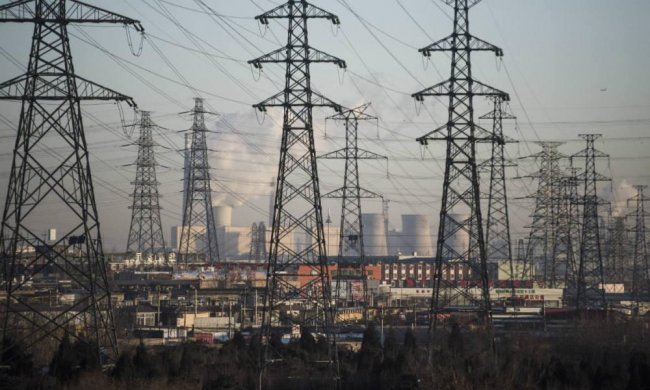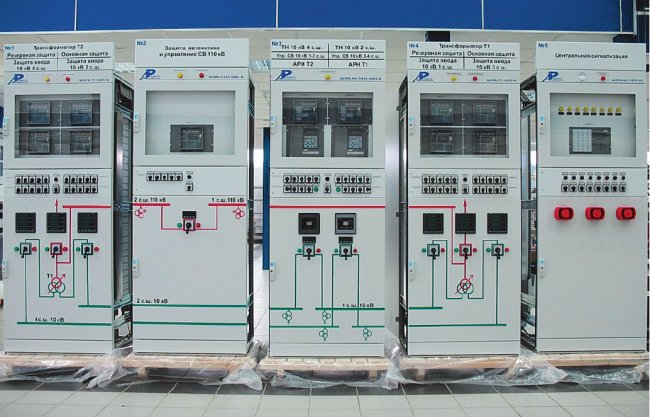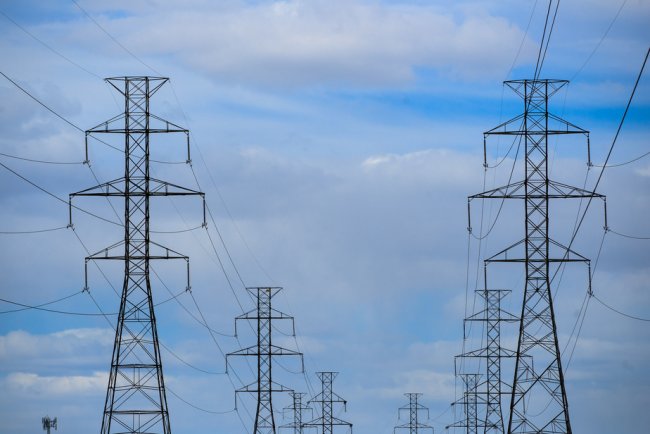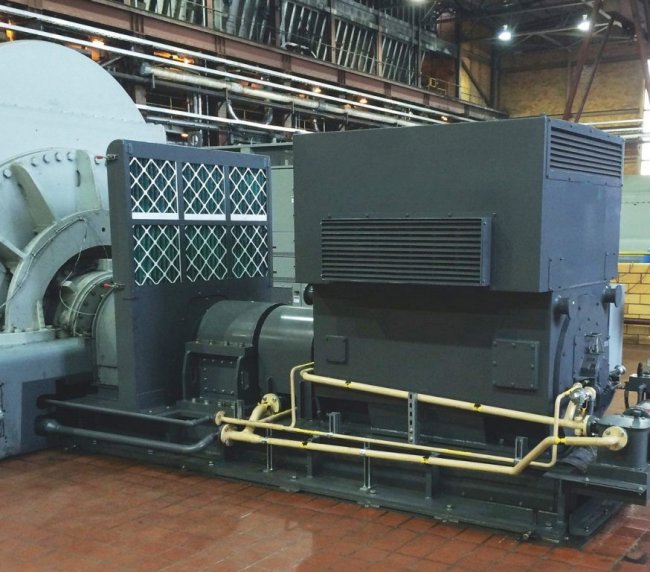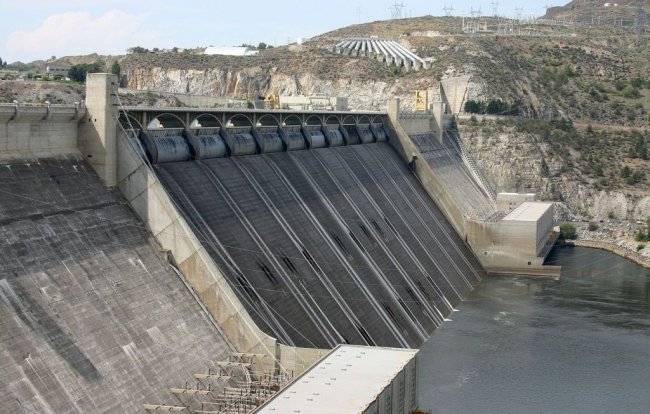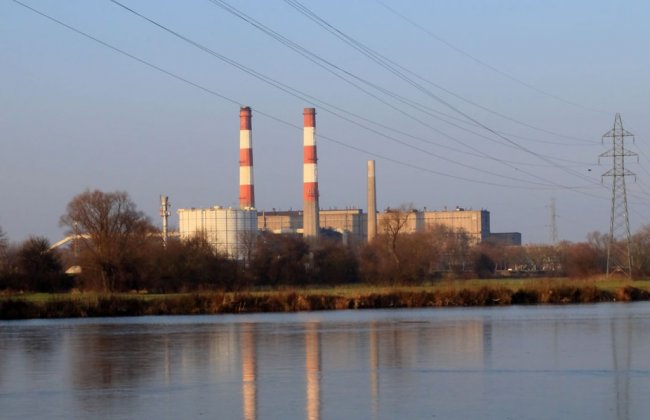Automation of power systems: APV, AVR, AChP, ARCH and other types of automation
The main parameters regulated by the automatic control systems of power systems are the frequency of the electric current, the voltage of the nodal points of the electric networks, the active and reactive power and the excitation currents of the generators of power plants and synchronous compensators, the flows of active and reactive power in electrical networks of energy systems and interconnections, pressure and temperature of steam, load on boiler units, amount of supplied air, vacuum in boiler furnaces, etc. In addition, switches in electrical networks and other devices can operate automatically.
The automatic management of electrical system modes consists of:
-
automation reliability;
-
power quality automation;
-
automation of economic distribution.
Reliability automation
Reliability automation (AN) is a set of automatic devices operating in the event of emergency equipment damage and contributing to the rapid removal of an accident, limiting its consequences, preventing the development of accidents in the power system and thus minimizing interruptions in the power supply .
The most common AN devices are relay protection of electrical equipment, automatic emergency unloading of the power system, automatic reconnection, automatic switching on of the reserve, automatic self-synchronization, automatic starting of the frequency of stopped units of hydraulic stations, automatic generator excitation regulators.
Automatic emergency discharge of energy systems (AAR) ensures that the balance of power in power systems is maintained in the event of a severe accident accompanied by a loss of large generating capacity and a reduction in AC frequency.
When the AAA is triggered, a number of users of the power system are automatically disconnected, which allows maintaining the power balance and prevents a strong reduction in frequency and voltage, which threatens to disrupt the static stability of the entire power system, i.e. , a complete breakdown in his work.
AAR consists of a number of queues, each of which operates when the frequency drops to a certain predetermined value and turns off a certain group of users.
Different AAF stages differ in response frequency setting, as well as in a number of power systems and their operating time (time relay setting).
AAA destruction, in turn, prevents users from being disconnected unnecessarily, because when enough users are disconnected, the frequency increases, preventing subsequent AAA queues from operating.
Automatic re-engagement applies to users previously disabled by AAA.
Automatic Reclose (AR) automatically re-enables the transmission line after it has been automatically disconnected. Automatic reclosing is often successful (a short-term power failure causes the emergency to self-destruct) and the damaged line remains in service.
Auto-close is particularly important for single lines, as successful auto-close prevents loss of energy to consumers. For multi-circuit lines, auto-reclose automatically restores the normal power circuit. Finally, automatic reclosing of the lines connecting the power plant to the load increases the reliability of the power plant.
AR is divided into three-phase (disconnecting the three phases in case of failure of at least one of them) and single-phase (disconnecting only the damaged phase).
Automatic reclosing of lines coming from power plants is done with or without synchronization. The duration of the automatic reclosing cycle is determined by the arc extinguishing conditions (minimum duration) and by the stability conditions (maximum duration).
Look - How automatic reclosing devices are arranged in electrical networks
Automatic Transfer Switch (ATS) includes backup equipment in case of emergency shutdown of the main one.For example, when a group of user lines is fed by one transformer, when it is disconnected (due to failure or for any other reason), the ATS connects the lines to another transformer, which restores normal power to the users.
ATS is widely used in all cases where according to the conditions of the electrical circuit it can be carried out.
Automatic self-synchronization ensures that generators are switched on (usually in emergencies) using the self-synchronization method.
The essence of the method is that an unexcited generator is connected to the network and then excitation is applied to it. Self-synchronization ensures rapid start-up of generators and accelerates emergency removal, allowing for a short time to use the power of generators that have lost communication with the power system.
I'm looking at — How automatic devices for switching on the reserve in electrical networks work
Automatic Frequency Start (AFC) hydroelectric breakers operate by reducing the frequency in the electrical system, which occurs when there is a loss of large generating capacity. AChP drives the hydraulic turbines, normalizes their speed and performs self-synchronization with the grid.
The AFC must operate at a higher frequency than the emergency unloading of the power system to prevent it from peaking. Automatic regulators of excitation of synchronous machines provide an increase in the static and dynamic stability of the power system.
Power quality automation
Power Quality Automation (EQA) supports parameters such as voltage, frequency, steam pressure and temperature, etc.
EQE replaces the actions of operational personnel and allows you to improve the quality of energy due to a faster and more sensitive reaction to deterioration of quality indicators.
The most common ACE devices are automatic excitation regulators of synchronous generators, automatic devices for changing the transformation ratio of transformers, automatic control transformers, automatic power changes of static capacitors, automatic frequency regulators (AFC), automatic frequency regulators and Intersystem Power Flows (AFCM).
The first group of ACE devices (excluding AFC and AFCM) enables the automatic maintenance of voltage at a number of nodal points of electrical networks within certain limits.
ARCH — devices that regulate frequency in power systems, can be installed in one or several power plants. The greater the number of power plants with automatic frequency regulation, the more precisely the frequency is regulated in the power system, and the smaller the share of each power plant in the automatic frequency regulation, which increases the regulation efficiency.
The combined automatic control of frequency and intersystem power flow using an automatic frequency control system is widely used for interconnected power systems.
Economical automation of distribution
Automation of Economic Distribution (AED) provides optimal distribution of active and reactive power in the power system.
The calculation of the optimal power distribution can be carried out both continuously and at the request of the dispatcher, while not only the characteristics of cost consumption in individual power plants, but also the effect of energy losses in electrical networks, as well as various restrictions on the distribution of gear loads, etc.).
Economical distribution automation and automatic frequency controllers can work independently of each other, but they can also be interconnected.
In the second case, AFC prevents frequency deviation by using for this purpose changes in the capacity of individual units of the plant, regardless of the conditions of economic distribution, only within the limits of a relatively small change in the total load.
With a sufficiently significant change in the total load, the AER comes into operation and in one way or another changes the power settings in the automatic regulation of the frequency of individual power plants. If the AER is independent of the AER, the AER settings are changed by the dispatcher after receiving a response to the AER request.
Continuing this thread:

